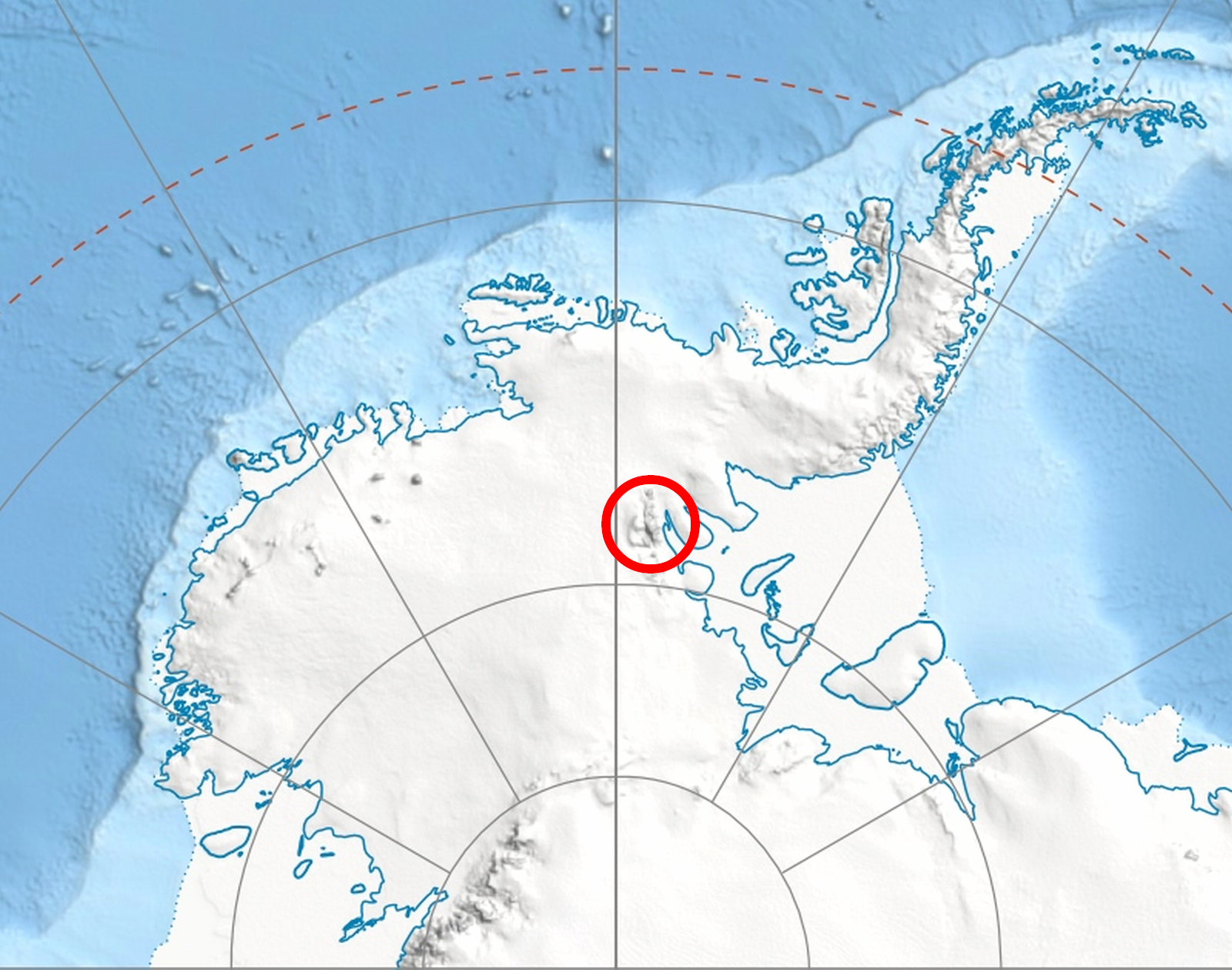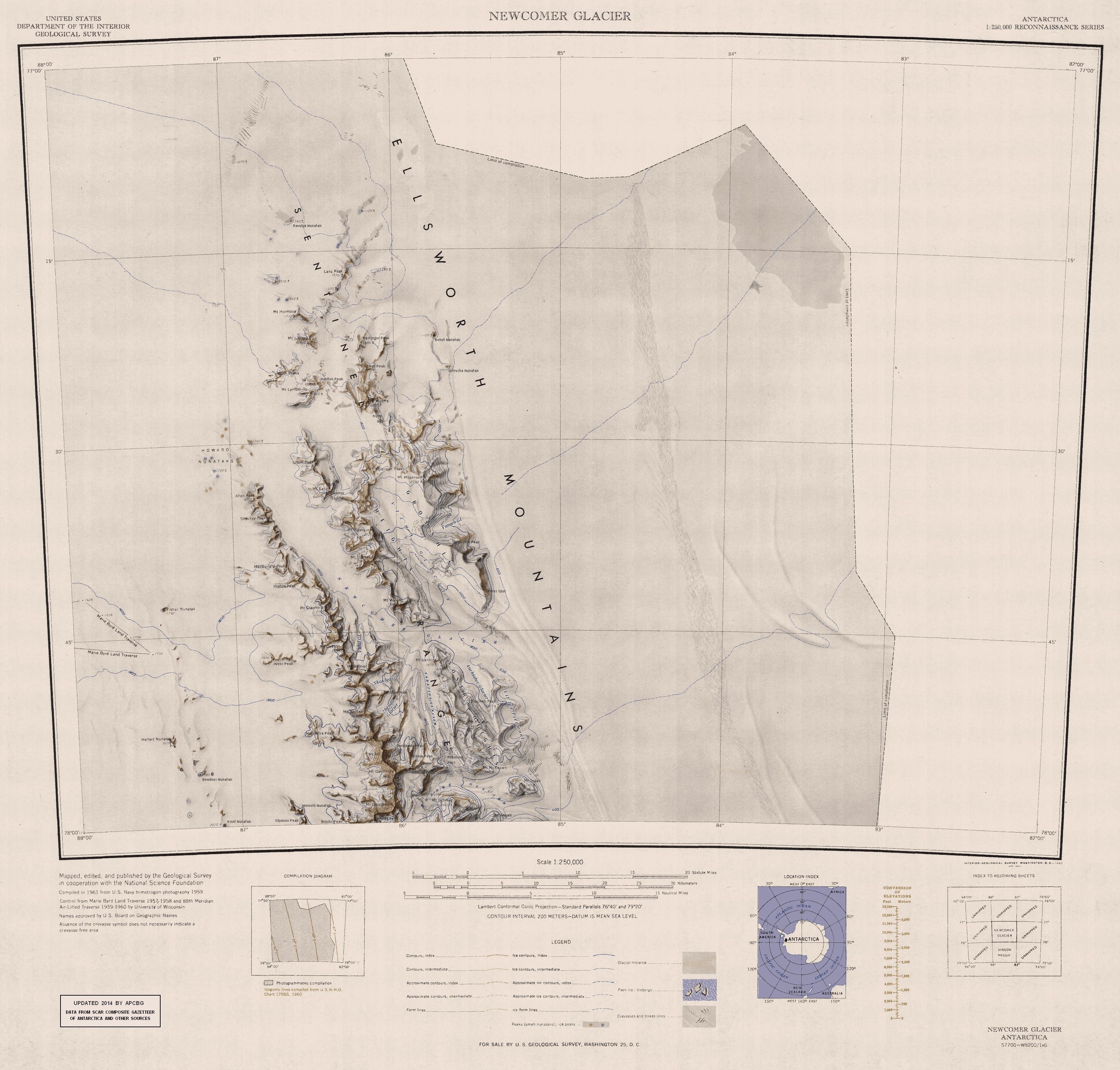|
Mount Sharp (Antarctica)
Mount Sharp () is a mountain over 3,000 m, standing 2 miles (3.2 km) southeast of Mount Barden in the north part of the Sentinel Range in Western Antarctica. It surmounts Zhenda Glacier to the north and Sabazios Glacier to the east. The mountain was mapped by the Marie Byrd Land Traverse party of 1957–58, under Charles R. Bentley, which named the mountain for Professor Robert P. Sharp, a member of the Technical Panel on Glaciology, part of the U.S. National Committee for the International Geophysical Year The International Geophysical Year (IGY; ), also referred to as the third International Polar Year, was an international scientific project that lasted from 1 July 1957 to 31 December 1958. It marked the end of a long period during the Cold War w ... (IGY). References * Mountains of Ellsworth Land {{Antarctica-mountain-stub ... [...More Info...] [...Related Items...] OR: [Wikipedia] [Google] [Baidu] |
Mountain
A mountain is an elevated portion of the Earth's crust, generally with steep sides that show significant exposed bedrock. Although definitions vary, a mountain may differ from a plateau in having a limited summit area, and is usually higher than a hill, typically rising at least above the surrounding land. A few mountains are inselberg, isolated summits, but most occur in mountain ranges. mountain formation, Mountains are formed through tectonic plate, tectonic forces, erosion, or volcanism, which act on time scales of up to tens of millions of years. Once mountain building ceases, mountains are slowly leveled through the action of weathering, through Slump (geology), slumping and other forms of mass wasting, as well as through erosion by rivers and glaciers. High elevations on mountains produce Alpine climate, colder climates than at sea level at similar latitude. These colder climates strongly affect the Montane ecosystems, ecosystems of mountains: different elevations hav ... [...More Info...] [...Related Items...] OR: [Wikipedia] [Google] [Baidu] |
Mount Barden
Mount Barden () is a mountain, 2,910 m, standing 2.5 nautical miles (4.6 km) northwest of Mount Sharp in the north portion of the Sentinel Range. It surmounts Zhenda Glacier to the east. The mountain was named by the Advisory Committee on Antarctic Names (US-ACAN) for Virgil W. Barden, an ionospheric physicist and member of the 1957 wintering party at Byrd Station. See also * Mountains in Antarctica This is a list of all the ultra prominent peaks (with topographic prominence greater than 1,500 metres) in Antarctica. Some islands in the South Atlantic have also been included and can be found at the end of the list. Antarctica South At ... Mountains of Ellsworth Land {{EllsworthLand-geo-stub ... [...More Info...] [...Related Items...] OR: [Wikipedia] [Google] [Baidu] |
Sentinel Range
The Sentinel Range is a major mountain range situated northward of Minnesota Glacier and forming the northern half of the Ellsworth Mountains in Antarctica. The range trends NNW-SSE for about and is wide. Many peaks rise over and Vinson Massif (4892 m) in the southern part of the range is the highest elevation on the continent.Sentinel Range. SCAR Composite Antarctic Gazetteer. Sentinel Range comprises a main ridge (featuring Vinson Massif in its southern portion) and a number of distinct heights, ridges and mountains on its east side, including (south to north) Owen Ridge, Petvar Heights, [...More Info...] [...Related Items...] OR: [Wikipedia] [Google] [Baidu] |
Western Antarctica
West Antarctica, or Lesser Antarctica, one of the two major regions of Antarctica, is the part of that continent that lies within the Western Hemisphere, and includes the Antarctic Peninsula. It is separated from East Antarctica by the Transantarctic Mountains and is covered by the West Antarctic Ice Sheet. It lies between the Ross Sea (partly covered by the Ross Ice Shelf), and the Weddell Sea (largely covered by the Filchner-Ronne Ice Shelf). It may be considered a giant peninsula, stretching from the South Pole towards the tip of South America. West Antarctica is largely covered by the Antarctic ice sheet, but there have been signs that climate change is having some effect and that this ice sheet may have started to shrink slightly. Over the past 50 years, the west coast of the Antarctic Peninsula has been – and still is – one of the most rapidly warming parts of the planet, and the coasts of the Peninsula are the only parts of West Antarctica that become (in summer) ice ... [...More Info...] [...Related Items...] OR: [Wikipedia] [Google] [Baidu] |
Zhenda Glacier
Zhenda Glacier (, ) is the 8 km long and 4.8 km wide glacier on the east side of the main crest of northern Sentinel Range in Ellsworth Mountains, Antarctica. It is situated west of Sabazios Glacier and southeast of Skaklya Glacier. The glacier drains the northeast slopes of Mount Sharp and the east slopes of Mount Barden, flows northeastwards and together with Skaklya Glacier joins Sabazios Glacier west of Mount Lanning in Sostra Heights. The glacier is named after the settlement of Zhenda in Southern Bulgaria. Location Zhenda Glacier is centred at . US mapping in 1961. See also * List of glaciers in the Antarctic * Glaciology Maps Newcomer Glacier. Scale 1:250 000 topographic map. Reston, Virginia: US Geological Survey, 1961. Antarctic Digital Database (ADD).Scale 1:250000 topographic map of Antarctica. Scientific Committee on Antarctic Research (SCAR). Since 1993, regularly updated. References Zhenda GlacierSCAR Composite Gazetteer of Antarctica Bulgar ... [...More Info...] [...Related Items...] OR: [Wikipedia] [Google] [Baidu] |
Sabazios Glacier
Sabazios Glacier (, ) is the long and wide glacier on the east side of northern Sentinel Range in Ellsworth Mountains, Antarctica. It is situated south of Newcomer Glacier, west of Anchialus Glacier, north of Embree Glacier, and east of Zhenda Glacier and Skaklya Glacier. The glacier drains the east slopes of Mount Alf and Mount Sharp, and the north slopes of the side ridge that trends 9.15 km from Mount Dalrymple on the main crest of Sentinel Range east-northeast to Robinson Pass, flows northwards and joins Newcomer Glacier northwest of Mount Lanning in Sostra Heights. The glacier is named after the Thracian god Sabazios. Location Sabazios Glacier is centred at . US mapping in 1961. Tributary Glaciers * Zhenda Glacier * Skaklya Glacier See also * List of glaciers in the Antarctic * Glaciology Maps Newcomer Glacier. Scale 1:250 000 topographic map. Reston, Virginia: US Geological Survey, 1961. Antarctic Digital Database (ADD).Scale 1:250000 topographic ... [...More Info...] [...Related Items...] OR: [Wikipedia] [Google] [Baidu] |
Charles R
Charles is a masculine given name predominantly found in English and French speaking countries. It is from the French form ''Charles'' of the Proto-Germanic name (in runic alphabet) or ''*karilaz'' (in Latin alphabet), whose meaning was "free man". The Old English descendant of this word was '' Ċearl'' or ''Ċeorl'', as the name of King Cearl of Mercia, that disappeared after the Norman conquest of England. The name was notably borne by Charlemagne (Charles the Great), and was at the time Latinized as ''Karolus'' (as in ''Vita Karoli Magni''), later also as '' Carolus''. Etymology The name's etymology is a Common Germanic noun ''*karilaz'' meaning "free man", which survives in English as churl (James (wikt:Appendix:Proto-Indo-European/ǵerh₂-">ĝer-, where the ĝ is a palatal consonant, meaning "to rub; to be old; grain." An old man has been worn away and is now grey with age. In some Slavic languages, the name ''Drago (given name), Drago'' (and variants: ''Dragom ... [...More Info...] [...Related Items...] OR: [Wikipedia] [Google] [Baidu] |
Robert P
The name Robert is an ancient Germanic given name, from Proto-Germanic "fame" and "bright" (''Hrōþiberhtaz''). Compare Old Dutch ''Robrecht'' and Old High German ''Hrodebert'' (a compound of '' Hruod'' () "fame, glory, honour, praise, renown, godlike" and ''berht'' "bright, light, shining"). It is the second most frequently used given name of ancient Germanic origin.Reaney & Wilson, 1997. ''Dictionary of English Surnames''. Oxford University Press. It is also in use as a surname. Another commonly used form of the name is Rupert. After becoming widely used in Continental Europe, the name entered England in its Old French form ''Robert'', where an Old English cognate form (''Hrēodbēorht'', ''Hrodberht'', ''Hrēodbēorð'', ''Hrœdbœrð'', ''Hrœdberð'', ''Hrōðberχtŕ'') had existed before the Norman Conquest. The feminine version is Roberta. The Italian, Portuguese, and Spanish form is Roberto. Robert is also a common name in many Germanic languages, including En ... [...More Info...] [...Related Items...] OR: [Wikipedia] [Google] [Baidu] |
Glaciology
Glaciology (; ) is the scientific study of glaciers, or, more generally, ice and natural phenomena that involve ice. Glaciology is an interdisciplinary Earth science that integrates geophysics, geology, physical geography, geomorphology, climatology, meteorology, hydrology, biology, and ecology. The impact of glaciers on people includes the fields of human geography and anthropology. The discoveries of water ice on the Moon, Mars, Europa (moon), Europa and Pluto add an extraterrestrial component to the field, which is referred to as "astroglaciology". Overview A glacier is a persistent body of dense ice, a form of rock) formed from snow falling and accumulating over a long period of time; glaciers move very slowly, either descending from high mountains, as in valley glaciers, or moving outward from centers of accumulation, as in continental glaciers. Areas of study within glaciology include glacial history and the reconstruction of past glaciation. A glaciologist is a person ... [...More Info...] [...Related Items...] OR: [Wikipedia] [Google] [Baidu] |
International Geophysical Year
The International Geophysical Year (IGY; ), also referred to as the third International Polar Year, was an international scientific project that lasted from 1 July 1957 to 31 December 1958. It marked the end of a long period during the Cold War when scientific interchange between East and West had been seriously interrupted. Sixty-seven countries participated in IGY projects, although one notable exception was the mainland China, People's Republic of China, which was protesting against the participation of the Republic of China (Taiwan). East and West agreed to nominate the Belgian Marcel Nicolet as secretary general of the associated international organization. The IGY encompassed fourteen Earth science disciplines: Auroral light, aurora, airglow, cosmic rays, Earth's magnetic field, geomagnetism, gravity, ionosphere, ionospheric physics, longitude and latitude determinations (precision mapping), meteorology, oceanography, Ionizing radiation, nuclear radiation, glaciology, seismo ... [...More Info...] [...Related Items...] OR: [Wikipedia] [Google] [Baidu] |





